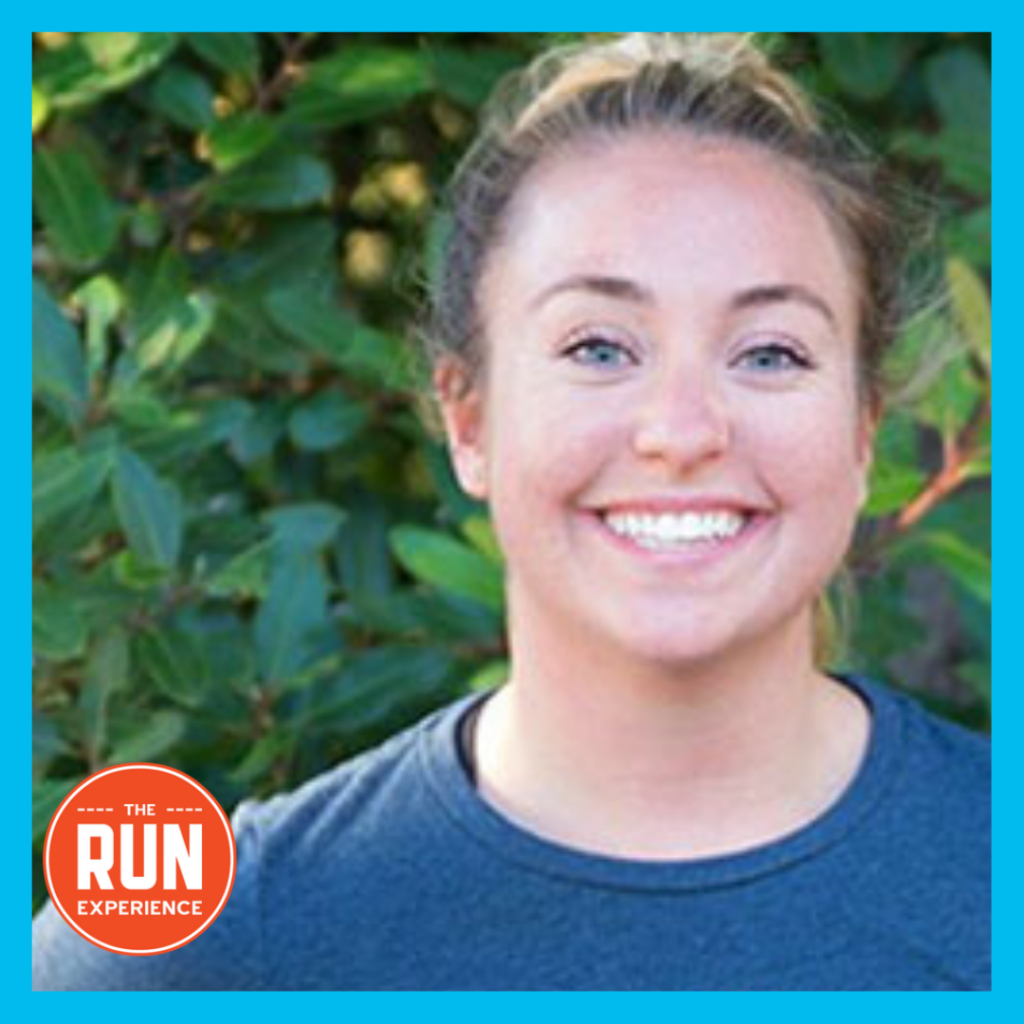Training for a 10K Beginner Running Plan (Schedule & FAQ)
Start training for a 10K the right way. Follow our 10K running plan and 10K training schedule to ensure you train at peak form and fitness.

You might be a somewhat new runner who has already conquered a few 5k races. Ready to take it to the next level? Time to start training for a 10k.
A 10k might feel intimidating because it’s twice the distance, but we’ve got you covered with a 10k running plan that can work for any schedule to get you ready for race day.
In this 10k training guide, we’ll walk you through:
- A proper 10k training schedule
- Sample 10k running plans
- Coaching tips to help you learn how to train for a 10k (the right way)
- Answers to frequently asked questions about 10k races and training methods
Training for a 10K: What You Need to Know
Let’s follow along with Coach Nate to learn more about a 10k training schedule that will have you lacing up your running shoes to get started in no time.
This 10k running plan is focused on quality workouts that will take you to the next level. Nate will teach you how to set a foundation as a healthy runner and get you the finish line of a 10k—and hopefully a personal record!
How Far Is 10k?
A 10k length distance will cover 6.2 miles. Or you can think of it as two 5k races (3.1 miles) back to back.
How Long Does It Take To Run A 10k?
As the car commercials say, your mileage may vary. Meaning, your 10k time will almost certainly be different than your buddy’s 10k time. With that in mind, runners generally need anywhere from 30 to 60 minutes to run a 10k race. If you’re a beginner runner using a run-walk method, you’ll have a longer race time. If this isn’t your first 10k and you know more about your ideal race pace then you’ll be on the shorter end.
The important thing is not to focus on the clock. Instead, focus on putting in work on a solid 10k running plan that helps you build speed, stay strong, and prevents injuries.
How Long To Train for a 10k Race??
First of all, you want to give yourself about an eight-week period of time to properly train for a 10k. Of course, this depends a bit on your fitness level, but it’s a good estimation. You’ll start with about three to four runs each week, and each run will have a specific purpose with varied paces, varied terrain, and different techniques. You’ll also want to incorporate some rest days to prevent getting injured and let your body recover.
Pro-tip: No matter what workout you’re doing, make time to fit in a short warm-up and cool down. This helps your body stay healthy, prevents injury due to jumping straight into a hard workout, and avoids excessive soreness.
For a short, follow-along warm-up join Coach Holly in this video. No equipment required!
How to Train for a 10K (the Right Way)
Training for a 10K race is more than just increasing your running distance—it requires a balanced approach that includes varied training, proper nutrition, and sufficient rest. Anyone can finish a 10K, but you don't want to just finish. You want to finish strong.
Training for a 10K the right way involves a mix of careful planning, listening to your body, and pushing yourself to new limits. Remember, each run has a purpose, and every aspect of your training—from nutrition to recovery—plays a role in helping you reach the finish line in your best form yet.
Here’s how to structure your training to complete a 10K in style:
1. Establish a Solid Base
Before diving into more intense 10K training, make sure you have a good running base. This means you should be comfortable running shorter distances regularly—ideally, you should be able to run at least a 5K comfortably. If you're starting from scratch, give yourself a few weeks to build up to consistent shorter runs before beginning a 10K training plan.
2. Incorporate Varied Workouts
A well-rounded 10K training plan should include a mix of different types of workouts, each serving a specific purpose:
- Long Runs: These gradually increase in length and help build your endurance. Long runs should be done at a slow, conversational pace, which helps improve your aerobic capacity without overstraining your body.
- Tempo Runs: These are moderately paced runs that are slightly uncomfortable but sustainable for a longer duration. Tempo runs improve your lactate threshold, allowing you to run faster for longer periods.
- Interval Training: This involves short bursts of high-intensity running followed by recovery periods. Interval training boosts your VO2 max, enhancing your body's ability to utilize oxygen during intense exercise.
- Easy Runs: These should be done at a relaxed pace to help your body recover from more intense sessions and to continue building aerobic fitness without adding undue stress.
More on each of these further down the article.
3. Focus on Recovery
Recovery is a critical component of any training plan, particularly when preparing for a race like a 10K:
- Rest Days: Schedule at least one or two days per week with no running. These days are crucial for allowing your muscles to repair and grow stronger.
- Active Recovery: Incorporate activities that keep you moving but are low impact, such as cycling, swimming, or yoga. These activities help maintain your cardiovascular fitness while giving your running muscles a break.
- Sleep: Ensure you are getting adequate sleep each night. Sleep is when much of your body’s healing and strengthening occurs, so skimping on sleep can hinder your progress and recovery.
4. Pay Attention to Nutrition
Your body needs the right fuel to perform and recover well:
- Before Runs: Eat a light snack or meal high in carbohydrates and low in fat to provide quick energy. A banana with a small amount of peanut butter or a piece of toast with honey are good options.
- After Runs: Focus on recovery by consuming a mix of carbohydrates and protein within 30 minutes after your training sessions. This helps replenish glycogen stores and repair muscle tissues.
- Hydration: Stay hydrated throughout your training. Drink water throughout the day, and consider using electrolyte solutions during longer runs to replace lost salts.
5. Tune into Technique
Proper running form can make your training more efficient and help prevent injuries:
- Posture: Keep your body relaxed but upright. Your shoulders should be back and down, away from your ears, with your head stacked over your spine.
- Foot Strike: Pay attention to how your foot strikes the ground. Aim for a mid-foot strike to minimize impact forces traveling up your leg.
- Cadence: Aim to maintain a cadence of around 170-180 steps per minute, which can help reduce the likelihood of injury and improve your running efficiency.
6. Test and Adjust
Throughout your training, test your progress with a trial 10K run or a shorter race pace run to gauge how your body is adapting. Use these tests to adjust your pace goals and training intensity as needed. Listening to your body and make adjustments based on how you feel.
4 Types of 10K Running Plan Training Days
1. The Varied Paces Day
This is a day where you’ll focus on different paces you’ll encounter during any race. It’s like a fartlek or interval run where you focus on different speeds for short periods of time with short recoveries. Beginner runners should start with a 20-30 minute run.
Try running for one minute at an eight out of 10 effort, then jogging for a minute. Then run 30 seconds at a nine out of 10 effort and jog for 30 seconds. Play with the intervals as you feel comfortable. Add a few minutes each week until you’re up to 40 minutes or more.
If you need some inspiration, here’s a follow-along fartlek workout:
2. The Tempo/Speed Work Day
One of your runs will be a faster run, also called a tempo run. Advanced runners can do two of them per week, but beginner runners should start out with one quality speed session per week.
10k training is more about running strength and stamina than sprinting or all-out speed. So, we want to spend time focusing on intervals of race pace effort–anywhere from three to eight minutes at a time.
For example, you might start out the first week with a 20-minute run where you run three minutes at 10k race pace three times. Recover by jogging for one to two minutes in between each interval. Each week, lengthen the amount of time of that tempo interval by one minute and add one more interval per run.
3. The Long Run Day
When you’re training for a 10k, you don’t need to go overboard with 15 or 20 mile weekly runs–you’re not training for a half marathon here. But, you do need to get comfortable running at least the 10k distance. Beginner runners should build up to that 10k distance over 8 to 10 weeks.
So, your first and second week might have a long run of three to four miles. Your third and fourth week can go up to five, and then the rest of the weeks should go up to six or seven miles each to get you comfortable with that 10k distance.
4. The Fun Run Day
At The Run Experience, we like to keep a focus on the joy of running. So, that’s why we incorporate a “fun run” day where you’re not focused on anything specific–you’re just running for the pure joy of it.
Go with whatever you’re feeling that day. Enjoy a new trail run you haven’t explored. If you’re feeling super strong, do some hill repeats. If you’re feeling mellow, keep it down to an easy, relaxed jog around the neighborhood. This day is up to you!
If you’re feeling too beat up to run, here are some tips on how to make the most of a recovery day:
Putting It All Together
In this case, we aren’t giving you a written-in-stone training plan. The reason why is so that you can plan your training around your schedule. If you’re like most of us, you have a busy life and responsibilities outside of running. So, take these workouts–varied paces workout, the speed/tempo workout, the long run day, and the fun run day and work them around your specific schedule.
Maybe you like to run early in the morning before work or school. Perhaps you like to get a boost from a workout during your lunch break. It’s okay to run in the evening, but make sure to finish up at least an hour before bedtime so it doesn’t affect your sleep.
10K Training Schedule Sample
That being said, here’s an example of just how to fit all the pieces of your training puzzle together. Swap days as needed, but do avoid putting two hard workouts, such as speed work and a long run, back to back.
- Day 1: Recovery and mobility
- do a short yoga flow or get in some mobility and foam rolling
- Day 2: Run drills
- focus on a piece of your run form during your regular run
- Day 3: Strength training
- include a short strength workout, such as the one below
- Day 4: Quality run
- incorporate some speed work such as those tempo intervals or fartleks
- Day 5: Recovery and core
- throw in some favorite yoga moves and target your core strength
- Day 6: Long run
- your longest run of the week—don’t forget a warm-up!
- Day 7: Fun run
- as mentioned, chose your own adventure today.
Pro-tip: Especially if you’re just getting started, incorporate some cross-training, mobility work, and strength training into your training program. Lower impact cross-training such as yoga, pilates, and swimming improve your cardiovascular capabilities, keep you limber, reduce soreness, and your risk of injury.
Here’s a simple, follow-along strength routine with Coach Holly that will focus on single-leg strength.
5 Coaching Tips on 10K Training Plans for Beginners
Don’t just take a single person’s word for it. Learn what all our coaches have to say about training for a 10K:
Coach Elizabeth’s 10K Training Advice

“I heard once that the 10K is like the 5K’s ugly step-sister–Often ignored and usually disliked. But if you ask me, it’s a great race. I call it a long sprint. You need resiliency AND speed. Don’t neglect either in the build-up to your race day.
In your training schedule, this means including “race-specific” workouts done at the same pace as the goal race, but they also have about the same volume as the race itself.”
Coach Nate’s 10K Training Tips

“Remember we play how we practice! So, if you want to run a particular time, it’s imperative that you add speed work like race pace intervals into your 10K running plan every week. Start with shorter intervals of 3 x 2-3 minutes to get a good feel, and then progress to 3 x 6-10 minutes as the race gets closer.
At 10k pace, these intervals will feel quite challenging but they’ll give you the pacing experience, confidence, and physiological gains to have a great 10k all the way through the finish line.”
Coach Holly’s 10K Training Tips

“The 10K marries grit with endurance. You can’t leave it all out on the table from the beginning, but there’s not enough time to leave too much fuel in the tank either.
Spend a big chunk of your 10K training schedule learning your zones—such as how hard you can push and for how long, so that your plan on race day comes down to a science, not hopes and prayers. Tempo runs are the key here for gaining endurance.”
Coach Morgan’s 10K Training Schedule Theory

“The 10k can be a tricky distance because it’s right in between a sprint and an endurance run. That means you have to devote equal time to both your speed work and your long steady runs.
The 10k can be the best of both worlds and will require both grit and determination to complete a 10k training schedule.”
Coach’s Edwards 10K Training Philosophy

“I think that mentally you have to accept that you have to run at uncomfortable paces (faster than a tempo) for longer-than-you’re-used-to periods of time. That’s what makes it a hard-but-honest race distance. It’s typically right at the edge of your lactate threshold, which means that it’s mostly an anaerobic effort.
Anaerobic efforts all come with a countdown timer– you can only run that fast for so long before you exhaust glycogen stores. The good thing is that lactate threshold levels can be improved with training. Your 10K running plan will need to include longer intervals that ride that uncomfortable edge so that your body learns to better buffer the lactate.”
Learn More About How to Train for a 10K
Now that you have the 10K running plan, it’s time to add the finishing touches to your training. A 10K training schedule is just the beginning—now, you need to layer it with proper workouts, exercises, recovery, and nutrition.
It might seem overwhelming, but we’re here to help walk you from the start to the finish line. Our mobile app has everything you need to learn how to train for a 10K—from running technique to mobility workouts, it’s got it all.
Download our new mobile app for access to coaching advice, daily video workouts, injury prevention tips, and complete training programs that will help motivate and inspire your 10K training program!
